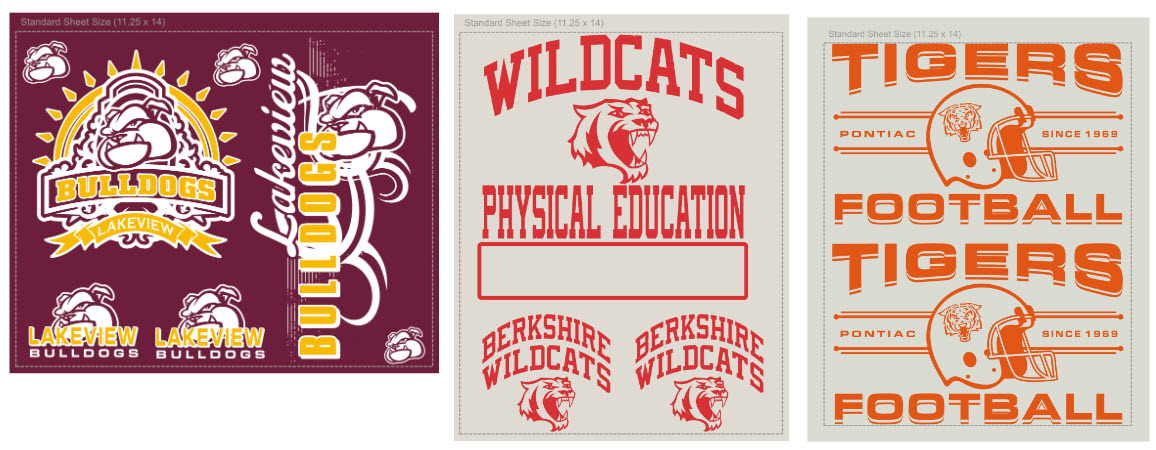4 Ways to Price Heat-Printed T-Shirts
The stakes are high when it comes to getting the price just right.

Pricing decorated apparel is one of the most challenging decisions shop owners face in running their business. The stakes are high when it comes to getting the price just right. Prices both too low or too high can really hurt your business. Too low and you won’t make enough money to stay in business, or you’ll be making enough money to work for almost nothing. Too high and you may be losing customers due to price-conscientious shoppers.
So the question remains: how do you price T-shirts? And in this case, heat-printed T-shirts.
To start talking about pricing, there are a few factors we have to consider. Things like costs, your market, competition, and your marketing all play a part when pricing your shirts. You can use several pricing methods. However, there is one method that I think is above the rest. With that, let’s talk about the different options for pricing your decorated T-shirts.
SIMPLE COST PRICING
Using this method, you take your direct costs of making your T-shirts (the blank shirt and the cost of the transfer) and then double your costs for your selling price. However, this pricing model does not take into consideration the competition in your area or price breaks. Typically, people are used to getting a shirt cheaper when buying more, which this model does not take into consideration.
This method can have nice profits with a higher margin and is a good place to start, but I think there are better pricing methods than this one.
BULK PRICING
With this pricing method, you consider quantity. If a customer buys a larger number of shirts, the unit price of each shirt decreases. This can attract more customers with larger orders, which can have multiple benefits. Typically, larger orders tend to be relatively easy because it’s the same shirt in large quantities.
Your own costs decrease (lower transfer cost and free shipping on large apparel orders), and it’s usually a simple enough order that you can knock it out pretty quickly with a front-only design. Orders like this make using screen-printed transfers the way to go. They apply quickly, and there is not a lot of labor time. So, even though your margins are not as high, they can still be a healthy margin, even when lowering the overall price of the shirt to meet quantity breaks. Overall, you can make a lot more from bulk orders since you make up for a slightly lower margin with a higher quantity.
This pricing method helps with the competition, too, by having competitive pricing at various quantities.
BRAND PRICING
This pricing method is more used when selling in a retail environment, typically low quantity runs, even “onesies and twosies.” This is the pricing strategy for popular brands. The customization is usually not as personalized but appeals to a larger audience, such as city pride or team pride. This method goes well when selling directly to each consumer, instead of to a “group” customer, such as a baseball team or school.
As you build your brand and the demand increases for your brand, then you can increase your prices. Usually, your brand resonates with a group of people, and the focus of your shirts are the designs themselves.
With this pricing model, you will be selling fewer shirts at a time, but your margins will be extremely high because of the demand. You can almost set your pricing based on your desired margin as long as your customers are willing to pay for it. Building your brand will need to come first, and taking into consideration the competition will be significant in this scenario.
COMPETITIVE PRICING
In my opinion, this is probably the best pricing method for apparel decorators to utilize in their T-shirt businesses. With this method, it takes a lot of the factors involved in pricing and wraps them up into a pretty solid model.
You definitely want to take into consideration your costs and direct costs of the transfers and shirts, but also your overhead expenses, such as insurance, accounting, marketing, property rent or taxes, utilities, etc. But with this model, after you figure out your costs, you look at your competition and the market. What does each job allow for in terms of selling price? Who else is selling in your market or niche? What does the demand look like? What is the purpose of each job (e.g., is it a one-time walk-a-thon promo shirt or is it a company uniform?)
Looking at all of these things will help you to determine your selling prices. With this pricing model, your margins will be a little more of a roller coaster. You will make more on some jobs than others. However, make sure you are consistent with your pricing. When you are consistent, you have the opportunity to make some high profits on a lot of jobs. For example, if someone wants hoodies, your costs may come in around $15, but the market for hoodies in your area may be $35-40 for a custom hoodie. In this case, you can more than double your costs for your selling price.
However, for the same customer, if they want T-shirts too, the costs may come to $6, but maybe a T-shirt in your market will only go as high as $10. In this case, your margin won’t be as high, but you are still making a nice profit for what it is.
When using this pricing model, always see what the market is selling for with each job and price accordingly to make as much as you can and not worry about a set percent mark-up on each job. Doing so, you won’t price unreasonably high and not get a job because of it, or price it too low, leaving money on the table. If for some reason you can’t go low enough for what the market is selling for in your area , it’s up to you how you want to go about it. If you have loyal customers and you treat them well, they might pay a little more for that particular job because they know what they are getting from you and you treat them well on pricing for other jobs. However, if a customer often buys from you and are overall profitable, maybe lower pricing on a particular job because you know they come back with other jobs that are usually more profitable.
If you are trying to get a new customer, it may not be worth it to price too low just to get the job. It sets bad expectations going forward .
With custom apparel, each job is different, and customers will understand that most of the time.




